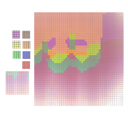
- Checking Mac Os For Program Conflicts In Literature
- Checking Mac Os For Program Conflicts Of Interest
- Mac Os For Chromebook
- Mac Os For Windows
- Mac Os For Dummies
Even though OS X can read Windows formatted hard drives just fine, the opposite is still not true, even with Windows 10. Granted, OS X can’t write to a Windows formatted disk, but at least it can read the contents of the drive and you can copy the data to your Mac computer.
Welcome to the forums. Common Mac OS X tools used here include Network Utility, lsof, and telnet and ping, and dns-sd and ping for Bonjour and mDNS, depending on details are sought.
Windows has absolutely no support for the Mac hard disk file format (HFS+). This means that if you connect a Mac formatted drive to Windows, you’ll simply get a blank drive letter and a message asking to format the disk.
If you click Cancel, you’ll just get a message stating that the volume does not contain a recognized file system.
It’s a good idea to check the hard drive health of a Mac as part of a periodic maintenance routine.Doing this is extremely easy with Disk Utility, and we’ll cover exactly how to verify hard disks, how to repair them, and what to do if you encounter any issues or errors in the process. The first handy thing you can do is check the S.M.A.R.T. Status with the built-in Disk Utility on macOS. SMART (Self-Monitoring Analysis and Reporting Technology) is an internal monitoring system that is included in almost all Mac hard drives (HDDs and SSDs). If Check Spelling As You Type is already checked, leave the menu without making changes. The Caveat With Spell-Checking As in any program, spell-checking is a matter of checking words against those in the program's list of accepted words. In most Mac systems, the boot drive will be using Apple’s Mac OS Extended (HFS+) filesystem format, which is a collection of fast-access “B-tree” databases that store where a file is located on your drive, its logical hierarchical organization, and attributes such as file ownership and access permissions. Click the button to download the latest version of Visual Studio 2017 for Mac. For instructions on setup and install, see the Setup and Install Visual Studio for Mac documentation. To learn more about Visual Studio 2017 for Mac, see Mac System Requirements and Mac Platform Targeting and Compatibility.
I’ve already written about how, if your external USB drive is not recognized by Windows, you might have to use the exFAT file format, which both Windows and Mac support, however, this requires formatting the drive and copying all the data back on.
Another solution is to enable file sharing on your Mac and access files from Windows that way, but this requires a decent amount of setup. So are there any other options? Well, thankfully yes. If you use Macs and PCs heavily in your setup, it might be worth spending some money on a program called MacDrive.
MacDrive
MacDrive is a great program that allows you to use Mac formatted disks on your Windows PC like a normal drive. Using the program, you can read and write data to HFS+ drives just like a normal Windows formatted drive.
You can then disconnect the drive from Windows, plug it into your Mac and access everything normally. If you find yourself having to copy data back and forth between Macs and PCs fairly often, this program is a great investment.

The Standard version is $49 and the Pro version is $69. You can see the difference between the two versions here. For me, the Standard version was more than enough. If you need to mount Mac formatted RAID sets on your PC or create ISO Mac images in Windows, then the Pro version will be necessary.
You can try out the program using the five-day free trial. Once you install it, you’ll have to restart your Windows PC. Once you log back into Windows, everything should automatically be good to go. If you connect a Mac formatted disk to your computer, it’ll instantly show up in Explorer with a little Apple icon on it.
If you double-click on the drive, it will open just like a normal Windows drive. If there is any file that is Mac-specific, it will also show an apple icon next to it.
Now you can copy data from the Mac formatted drive to your Windows PC and vice versa. It works perfectly and I didn’t run into a single issue. I was able to copy DMG files to my Windows PC and EXE files over to my Mac without any issue.
If you open the MacDrive app, you’ll see the main screen lists out the Mac drives the program has recognized already for you.
Click on the drive and you’ll get some options like opening the drive, removing it, getting a size breakdown and checking for errors.
I really like the fact that Disk Aware is part of this program because it allows you to quickly see what is taking up the most space on your hard drive, just like TreeSize does for Windows.
MacDrive also has other tools, which you can see across the top: Create, Repair, Burn, etc. Using Repair, you can connect a Mac drive to your Windows PC and fix it so that the data can be accessed. This is a great tool if you are a PC technician and someone brings you a Mac formatted hard drive that is corrupt or unreadable by OS X. You can use Mac Drive to try and repair it and access the data right on your PC.
Using the Create tab, you can create, delete or format partitions on a Mac disk. The Burn tab allows you to burn a CD/DVD for your Mac.
Overall, it’s an excellent program that is well worth the cost if you work with both operating systems on a regular basis. There is no other program out there that lets you access Mac files on a PC as easily and seamlessly as MacDrive. If you have any questions, feel free to comment. Enjoy!
The Microsoft Office file format is for Word, Excel and PowerPoint files between Mac and PC. The file format is called Office Open XML (OOXML) and was established by an international standards body. Office 2010 for Windows with service pack 2 or later and Office 2011 for Mac comply strictly with the standard. Office 2008 for Mac and 2007 and 2010 for Windows prior to service pack 2 comply about 98% of the way to the standard (there's a very minor exception in Excel).
Microsoft also ships the same set of fonts with Microsoft Office for Mac and PC.
Checking Mac Os For Program Conflicts In Literature

As for having documents be identical when moving from one computer to another there are factors you must consider. This is true PC to PC, PC to Mac, Mac to Mac, and Mac to PC. Microsoft Word is a word processor that has text that flows, unlike a PDF or page layout program. Any difference in font or printer driver from one machine to another has the potential to affect spacing, breaks, window & orphans, paragraphs, etc. To repeat - these changes have nothing to do with Mac to PC, rather they are caused by computer to computer differences.
Checking Mac Os For Program Conflicts Of Interest
Your documents should look the same on the Mac as long as ALL of these conditions are met:

Mac Os For Chromebook
* The documents on the PC originated in Microsoft Word 2010 with service pack 2
* The documents were saved in a current OOXML file format in Word 2010
Mac Os For Windows
* The documents used only fonts supplied with Microsoft Office 2010
* Old versions of the same fonts are not installed or active on either the Mac or the PC
* The documents are opened on the Mac in Microsoft Word 2011
* The current versions of the Microsoft Office fonts are active on the Mac
* The printer driver on the Mac behaves identically to the printer driver that was being used on the PC where the documents were saved.
The behavior of Word is identical on the two platforms with regard to the formatting you expressed concern about. There are conditions that must be met if you want your documents to look alike when moving from one computer to another - regardless of platform. It's the fonts, file formats and printer drivers that are the sticky points when moving a document from one computer to another regardless of platform.
Mac Os For Dummies
These are hard to control from a user perspective. In Word 2010 with SP 2 you could use macros to make sure your documents have only Microsoft Office fonts and are saved in the current file format before bringing them to the Mac, and even save them as a PDF for future reference. You won't have control over how exactly matching your printer drivers will be - even if you are using the same printer. Inevitably, some documents may need to be tweaked, as a result.
댓글